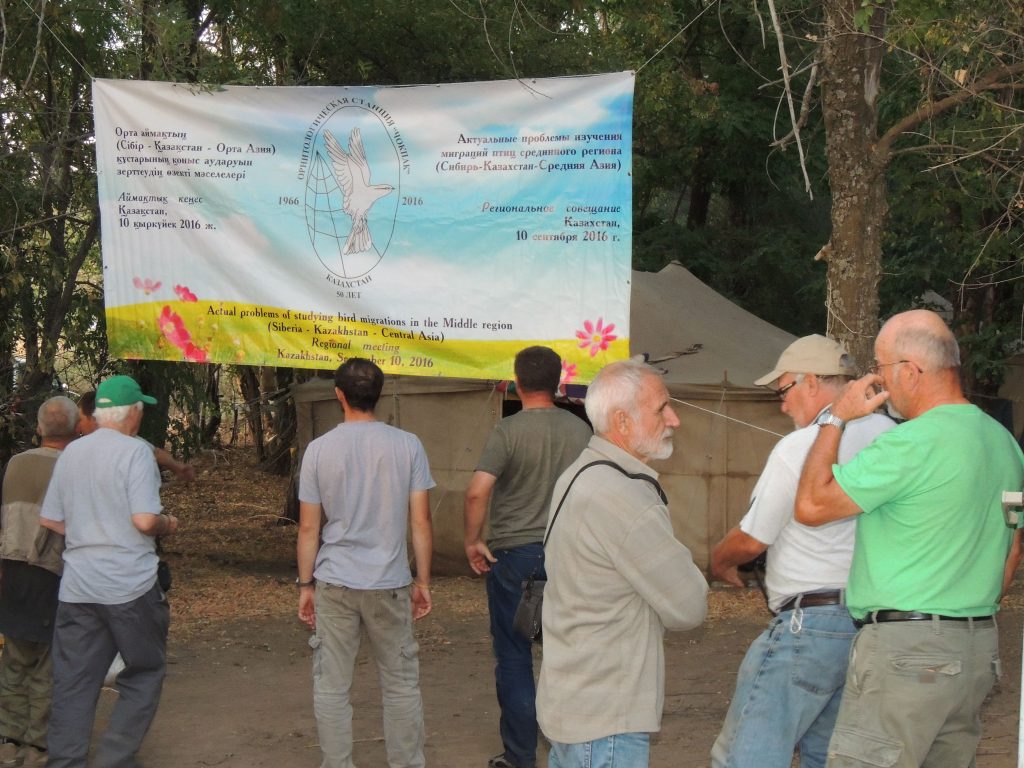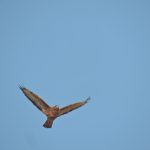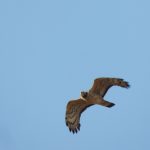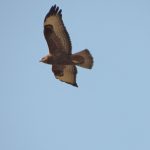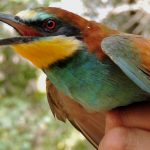September 7 2016 Chokpak Pass, Kazakhstan. This was one of our biggest migratory bird days. Hundreds of Common, Crested and Long-legged Buzzards mixed in with Common and Lesser Kestrels soared past; some high and some skimming low over the hillside. It was very exciting and we spent a lot of time trying with limited success to photograph them. If there was a signature bird in our Kazakh adventure though, it would have to be the European Bee-eater and this same day produced many flocks of them too.
Bee-eaters are magnificent in almost every way: dramatically colourful, they have personality, and (oddly) don’t seem to mind being trapped and banded. There are twenty-four related species in the bee-eater family Merops, and another three species in related families. I met Cinnamon-chested Bee-eaters in Uganda and despite their commonness I never tired of them, (even if my companion and guide did). The European Bee-eaters of Kazakhstan are every bit as gorgeous. Everyone loves them except bee-keepers and you can sympathise, the birds have an insatiable appetite for fresh bees which they catch on the wing and cleverly disarm before swallowing.
At Chokpak we usually heard Bee-eaters before we saw them, not every time, sometimes, although we heard them them, they passed over out of sight against the stark blue sky. Occasionally a flock was low enough and in line with the Heligoland trap and then a handful would end up trapped. From there we’d collect and band them, record their sex, wing length, and fat reserves and then release them. There is a record of a Chokpak-banded European Bee-eater being re-found later in Antibes, France; almost due west about 5,000 Km.
The day ended with the arrival of visiting ornithologists from Uzbekistan, Siberia and other parts of Kazakhstan, who came to celebrate the 50th anniversary of the founding of the Chokpak bird observatory. So as the day closed we were banding European Bee-eaters, Sand Martins, Pale Martins and Barn Swallows together. We may have been struggling to communicate in broken Russian and English but we shared admiration for the birds and what they accomplish without micro-chip technology. After all at least one showed that it made its way from Kazakhstan to the South of France.